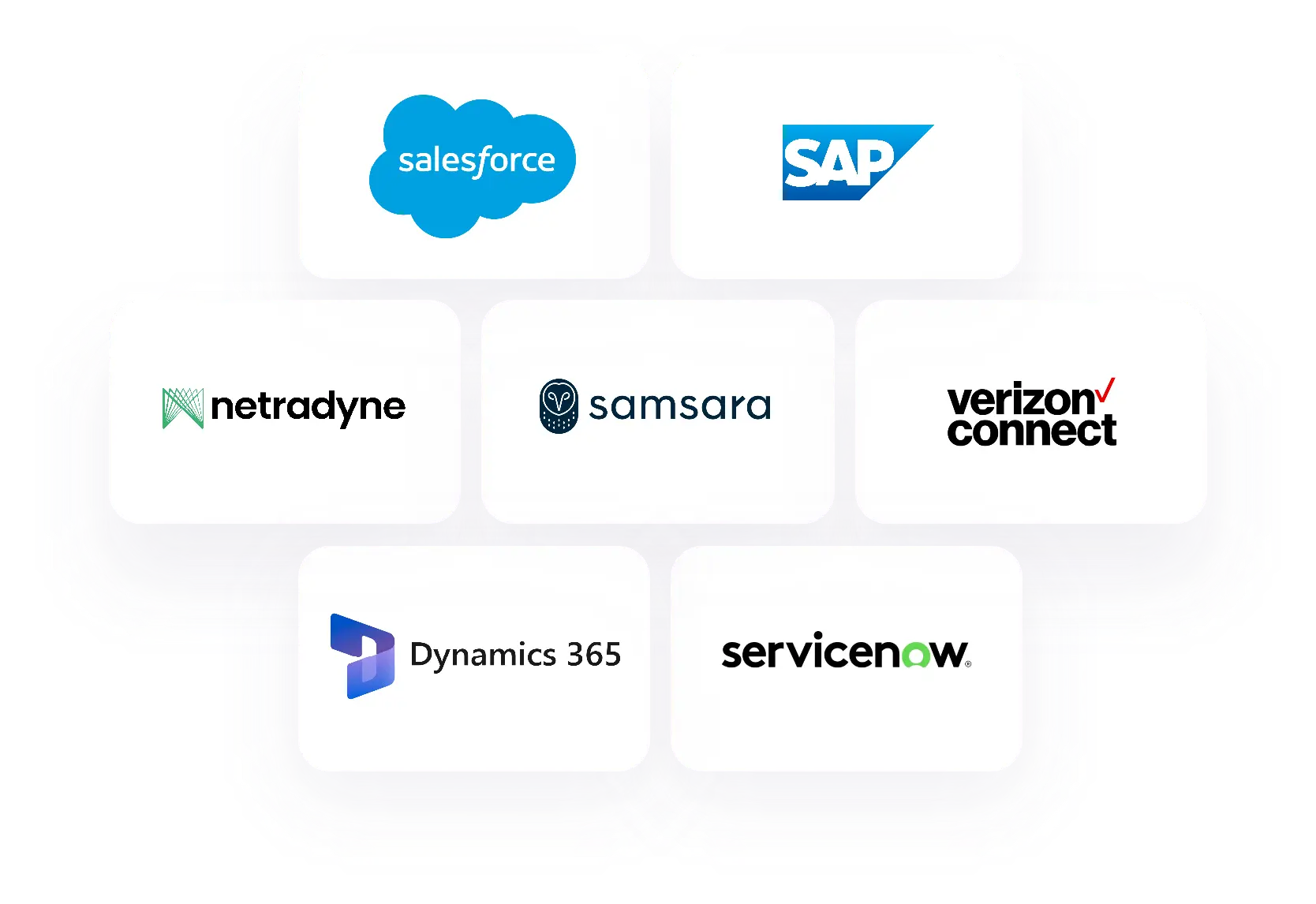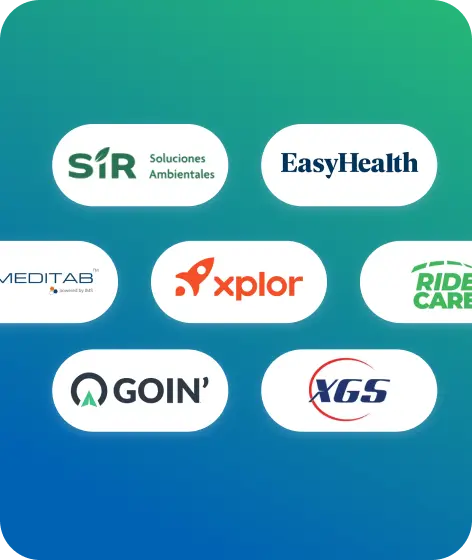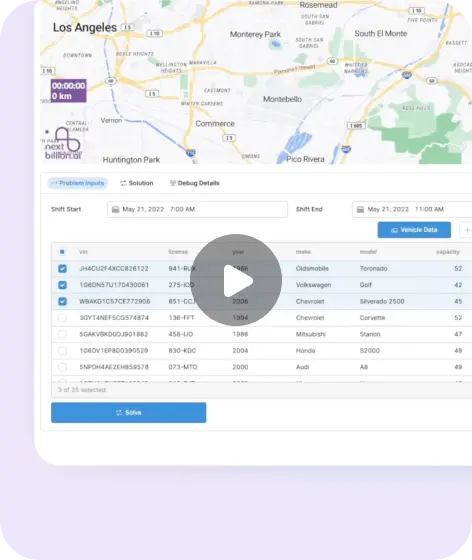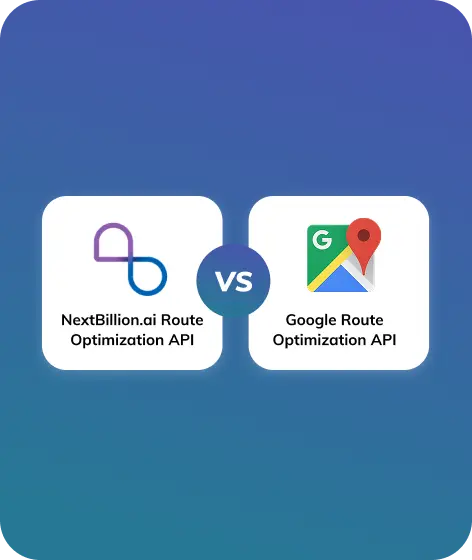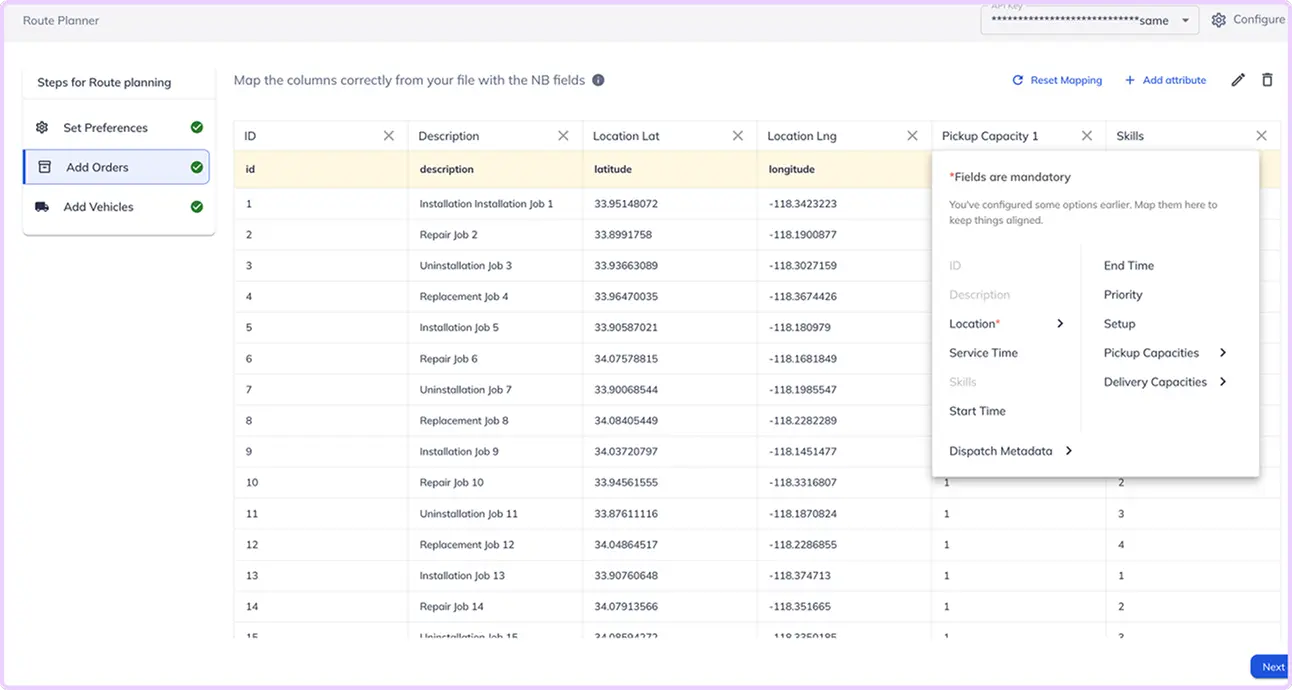Product and tech leaders in large-scale logistics companies use NextBillion.ai APIs

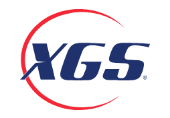










Real-World Challenges in Workforce Scheduling

Unoptimized Job
Assignments
Proximity-blind dispatching of workforce leads to time loss and delayed service.

Rigid Schedules Disrupt
Field Efficiency
Failure to consider job duration or delays leads to missed deadlines and poor service.

Poor Skill Mapping Leads to Burnout and Idle Time
Misaligned skills in schedules lead to missed jobs and less efficiency.
Solving Real-World Dispatch Complexities
with NextBillion.ai
Skill-Based Job
Matching
Automatically assign jobs based on technician certifications, expertise, or past experience.
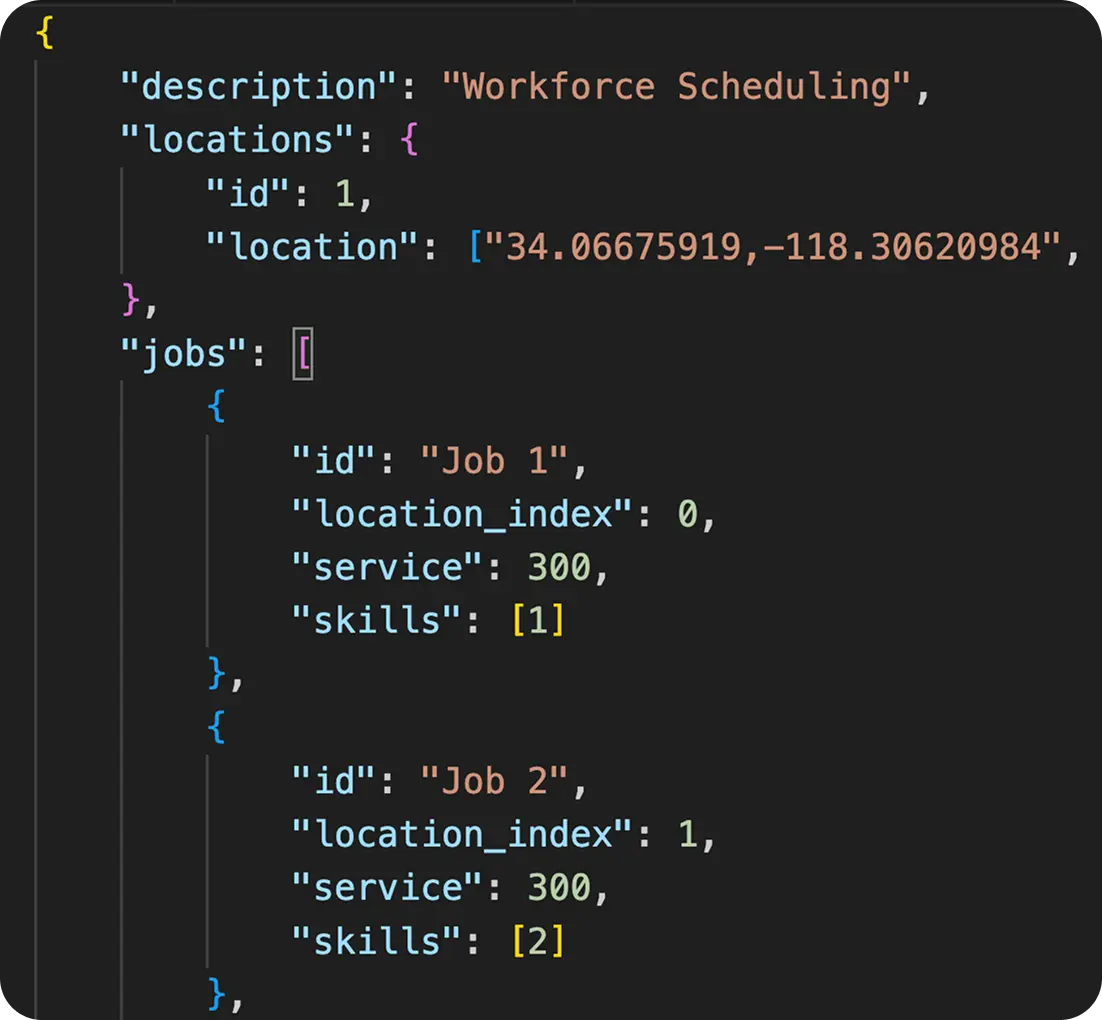
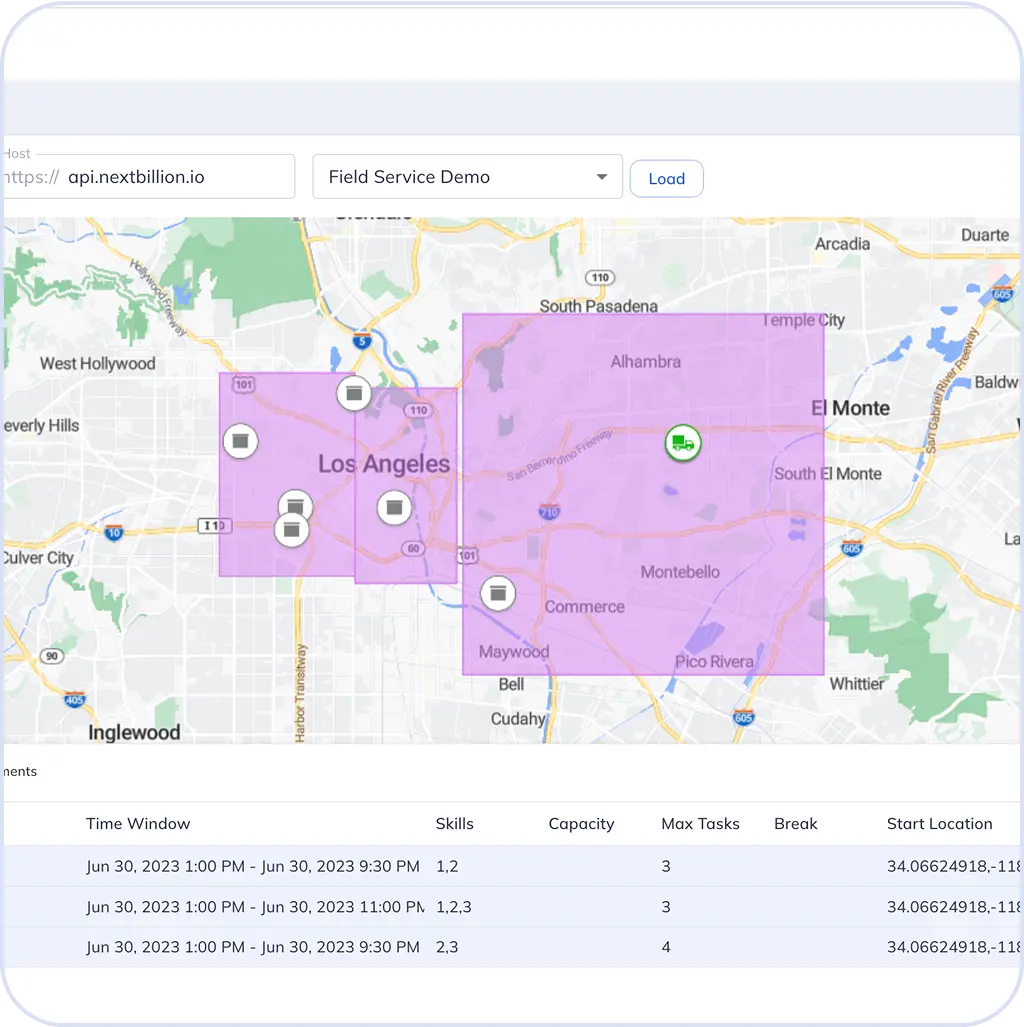
Location Aware Dispatching
Assign jobs based on technician starting point and job proximity to reduce idle travel time and maximize field productivity.
Flexible Time Window and Duration Handling
Auto-adjust schedules based on real-time constraints like job length, buffers, and tool pickups.
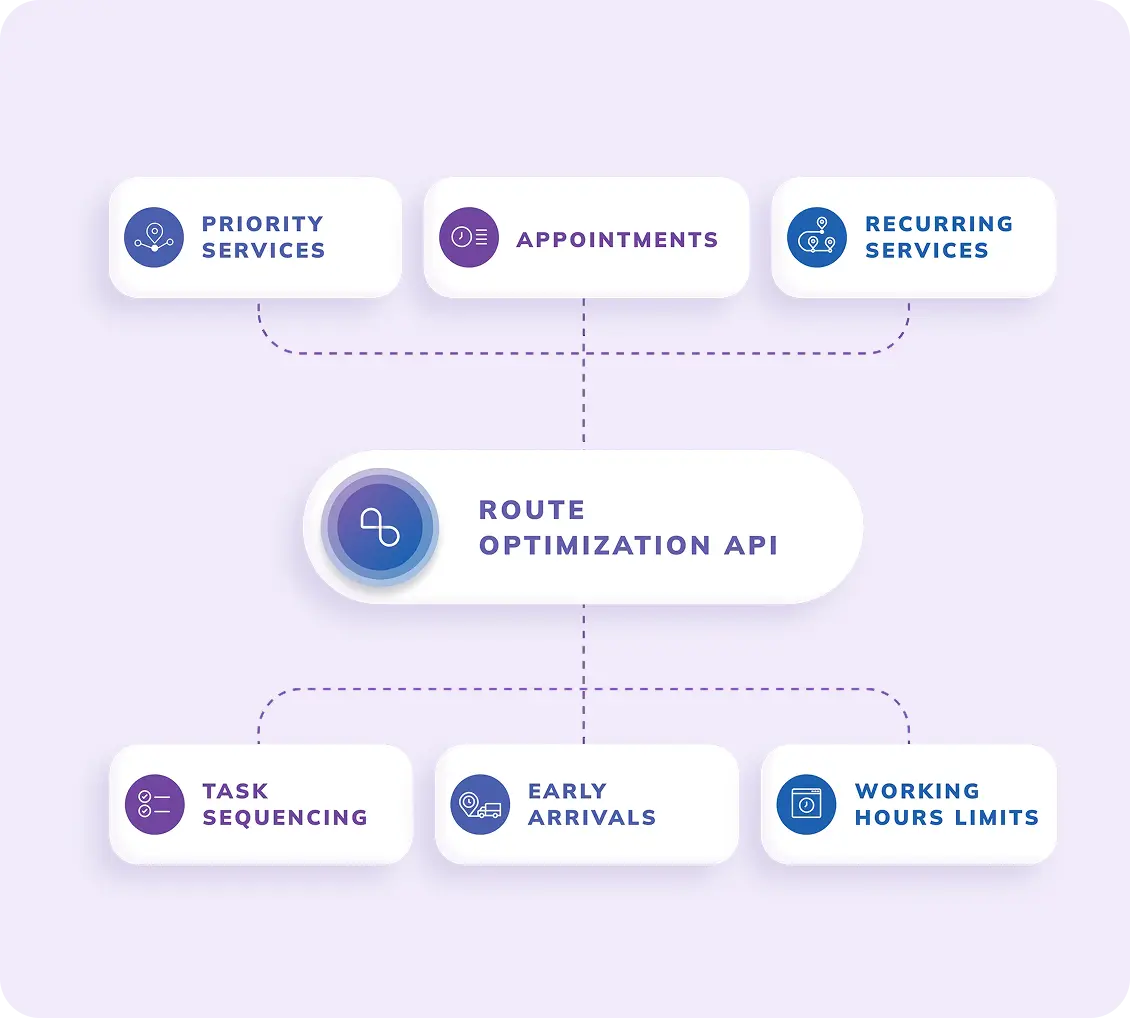
Industry-Specific Use Cases
Field Sales
Plan optimized routes with well-defined territories and non-overlapping routes for large field sales teams with ease.
Explore MoreField Services
Generate smart routes, assign jobs by skill, and plan territories at scale—ensuring accurate ETAs and efficient operations.
Explore MoreHVAC Services
Generate routes that cut travel time and prioritize jobs by matching the right technicians based on availability, timing, and skills.
Explore More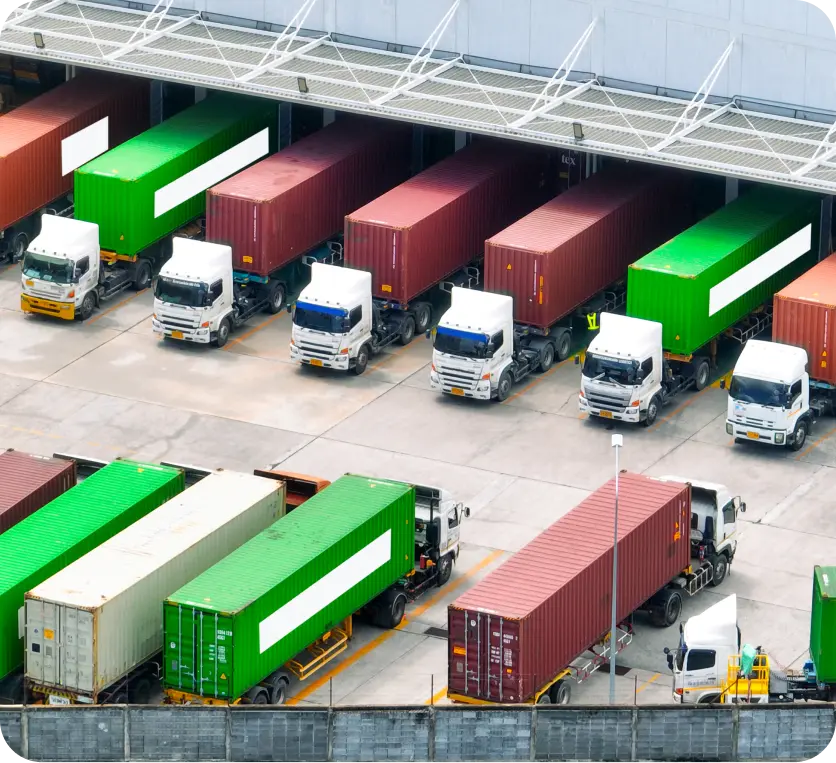


NextBillion.ai APIs integrate with all logistics applications
Add advanced routing and dispatch capabilities to your telematics and ERP systems.
View Integrations